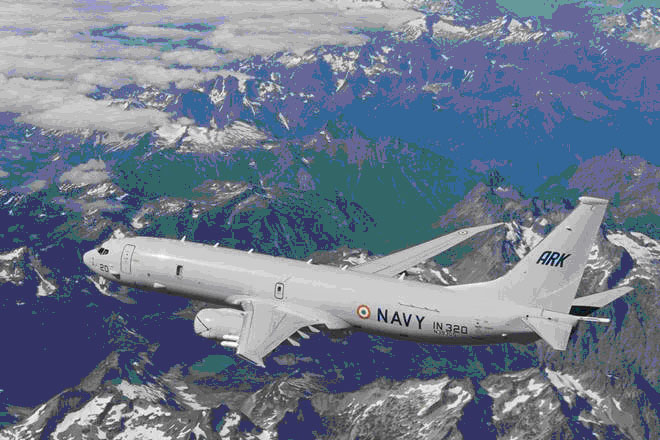What Is The P-8I Poseidon Doing At 15,000 Feet On India-China Border?
November 27, 2020
US-made Boeing P-8I Poseidon maritime patrol aircraft, also known as ‘Submarine Killer’, has been deployed in Eastern Ladakh near the China border by the Indian Army as tensions have been escalating with Beijing.
Developed and produced by Boeing Defense, Space, and Security for the United States Navy, the P-8 Poseidon is meant to operate mainly in the anti-submarine warfare (ASW), anti-surface warfare (ASUW), and shipping interdiction roles.
The Indian variant of the aircraft, known as the P-8I, has been designed to carry out all additional operations such as intelligence, surveillance, and recon naissance missions.
By equipping P-8I Neptune with a CAE Inc AN/ASQ-508A Magnetic Anomaly Detector (MAD) and a Griffon Corporation Telephonics APS-143C(V)3 multi-mode radar, India has been very successful in harnessing its capabilities on land, which is not its traditional habitat.
The Indian Navy-operated aircraft has been deployed in Ladakh as a surveillance platform in view of the border tension. The move is also aimed at creating a synergy between the three services – the army, the navy, and the air force.
In this mission, the maritime planes have been complementing a fleet of IAF aircraft, including the Mikoyan MiG-29K, MiG-29UPG, Mirage-2000, Sukhoi Su-30MKI, among others.
According to a retired IAF official, the aircraft can be the country’s eyes in the sky and support the operations of the forces.
“The American aircraft have been specifically customized by the Indian armed forces in order to be adaptable to different surroundings. While their major role lies in the sea, they can work as an additional pair of eyes out in the Ladakh region, and assist in other missions when needed,” he said requesting anonymity.
This is not the first time that the P-8I has been deployed for non-maritime operations. In 2017, it used to carry out battlefield surveillance and management roles during the 73-day Doklam standoff between Indian and PLA troops.
Earlier this year, Chief of Defense Staff, General Bipin Rawat, had revealed how he got familiarized with the P-8I aircraft, which were also used in the aftermath of the 2019 Pulwama terror attack in India’s Jammu and Kashmir in which 40 security personnel were killed.
“I came to know about the capabilities of the P-8I anti-submarine warfare planes after they were deployed in Doklam for surveillance,” said Rawat.
Besides, the aircraft can be used in other critical missions including search-and-rescue and anti-piracy ones.
Just a week ago, the Indian Navy received its ninth P-8I aircraft as part of the $1-billion deal signed with the United States for four additional planes back in 2016.
The country has been negotiating a deal for six more P-8Is with the US through the government-to-government route.
The Indian Navy was the first military wing of any country to get its hands on the American-made aircraft and currently ranks as the largest international customer. The patrol planes recently finished seven years of service with the Indian forces.
According to Managing Director of Boeing Defense India, Surendra Ahuja, “Our focus has been, and will be, on delivering the world’s best maritime patrol aircraft to the Indian Navy.”
“The P-8I, with its exceptional maritime surveillance and reconnaissance capabilities, versatility, and operational readiness, has proven to be an important asset to the Indian Navy. We remain committed to supporting the modernization and mission readiness of India’s defense forces,” he said.
The P-8I provides India’s maritime forces an edge in the strategically crucial Indian Ocean region, especially at a time when China has bullishly carried out expansionist policy throughout the South China Sea and on one side of India’s border.
The aircraft that is armed with torpedoes, Harpoon anti-ship missiles, and other weapons, can play a key role to secure India’s future.
Courtesy: Eurasian Times

